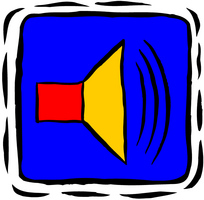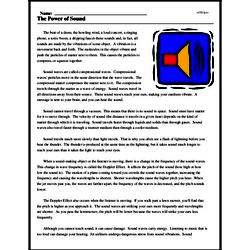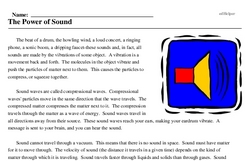The Power of Sound
The beat of a drum, the howling wind, a loud concert, a ringing phone, a sonic boom, a dripping faucet-these sounds and, in fact, all sounds are made by the vibrations of some object. A vibration is a movement back and forth. The molecules in the object vibrate and push the particles of matter next to them. This causes the particles to compress, or squeeze together.
Sound waves are called compressional waves. Compressional waves' particles move in the same direction that the wave travels. The compressed matter compresses the matter next to it. The compression travels through the matter as a wave of energy. Sound waves travel in all directions away from their source. These sound waves reach your ears, making your eardrum vibrate. A message is sent to your brain, and you can hear the sound.
Sound cannot travel through a vacuum. This means that there is no sound in space. Sound must have matter for it to move through. The velocity of sound (the distance it travels in a given time) depends on the kind of matter through which it is traveling. Sound travels faster through liquids and solids than through gases. Sound waves also travel faster through a warmer medium than through a cooler medium.




